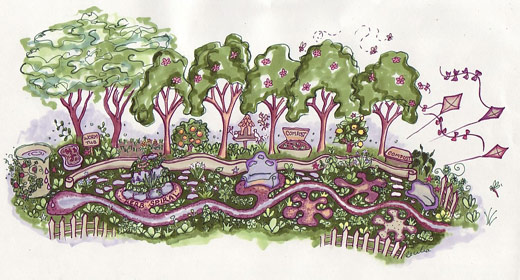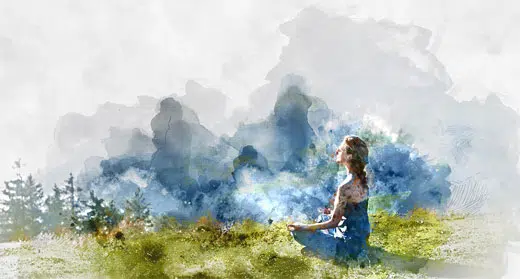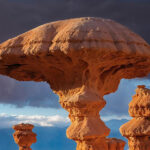by Tequia Burt: New research shows that urban gardeners can help boost dwindling populations of Monarch butterflies by planting milkweed…
You may have heard as a child that old saw that a butterfly landing on you brings good fortune. A symbol of metamorphosis and transformation throughout the ages, butterflies hold deep spiritual significance across many cultures; there is a good chance that children worldwide have heard the equivalent of that saying.
For Christians, butterflies represent resurrection. In North American Native mythology, butterflies symbolize the soul or human spirit. In the Jewish community, butterfly imagery is profoundly connected to remembrance of the Holocaust.
The Monarch is especially prized, particularly in Mexico. Each year, hundreds of millions of Monarch butterflies make their way to Mexico to overwinter in the oyamel fir forest in the mountains of Central Mexico. Residents believe the butterflies hold the spirits of their deceased loved ones returning home and are celebrated during the multiday holiday Día de los Muertos, or The Day of the Dead, which takes place Oct. 31 to Nov. 2.
Butterflies are not just spiritually important, however—they are significant contributors to the health of our planet. Not only are these butterflies an essential source of food for other insects, birds, and small animals, but Monarchs are also pollinators. The same kinds of habitats that support them support other pollinators such as bees, which are critical for creating and maintaining the ecosystem that we and other animals rely on for food and shelter.
But populations of Monarch butterflies have declined more than 80 percent over the past 20 years. The massive decline can be attributed mainly to climate change and the deforestation of natural habitats, but another big reason for the plummet is the steady loss of milkweed, the only plant on which Monarchs lay their eggs.
Since 2014, the U.S. Fish and Wildlife Service has been assessing whether to add the Monarch butterfly to the endangered species list. So, the agency approached ecologists at Chicago’s Field Museum to estimate the amount of habitat available to Monarchs and other pollinators.
The loss of milkweed in urban areas, where the plants are often treated as weeds, has been particularly devastating, according to Conservation Ecologist Erika Hasle, one of the study’s lead researchers. The results, which were released in June 2019, show that one of the most important things we can do to save the Monarchs is to plant milkweed in cities.
“We know that people in cities need nature, but does nature needs cities? Our findings say the answer is yes,” says Hasle, who works in the museum’s Keller Science Action Center. “As a country, 90 percent of us live in urban areas, so having habitat there that can support pollinators is really very important. This is particularly important for Midwestern cities like Chicago, Minneapolis, and Kansas City. As agriculture has become more monoculture, we’ve lost vital habitat to bigger and bigger cornfields.”
For city-dwelling gardeners like me, the answer is obvious: Plant a butterfly garden and save the world! (And boost my yield with more pollinators buzzing in the garden.)
I use my garden to help center, calm, and inspire me. But I also try to get my kids, 9-year-old Caleb and 7-year-old Molly, excited about gardening because it helps me show them the value of sustainability and of living your values. Now that it’s fall, leaves have withered and my garden is spent; there’s not much to do in terms of planting. But it is the perfect time to plant a butterfly garden with the kids. Milkweed seeds need a period of freezing and unthawing to be viable so fall—and even winter—planting is ideal.
During March and April, Monarch butterflies lay their eggs on milkweed plants, which then, after about four days, hatch into caterpillars. The milkweed nourishes and feeds the baby caterpillar for about two weeks until it transforms into a chrysalis. After 10 days, the Monarch emerges from the chrysalis, a beautiful butterfly.
I have a raised bed in the back corner of my yard, right next to the alley and garbage cans—a great spot for milkweed and other native wildflowers. You don’t need to live out on the prairie to grow wildflowers like milkweed—a large container or raised bed will do just fine. Most people tend to think of milkweed as an unattractive weed but there are 12 native species of milkweed on which Monarchs thrive, and most are quite lovely.
I know that planting a little butterfly garden in my backyard victory patch won’t actually save the world. But it helps me know that I am doing my part.
“People who live in cities think we are so far removed from nature that there’s not a lot we can do to help our planet,” says the Field Museum’s Hasle. “But this is one way that cities can make a really meaningful contribution to protecting wildlife that’s on the brink of being listed as an endangered species.”










































